It’s a tough job, but somebody has to do it.
This year the Singletracks staff tested 26 current model mountain bikes, ranging from XC to (almost) DH, and you can read all of those reviews here. Looking back, these are our favorites bikes from 2019, ordered by increasing amounts of rear travel.
Salsa Spearfish
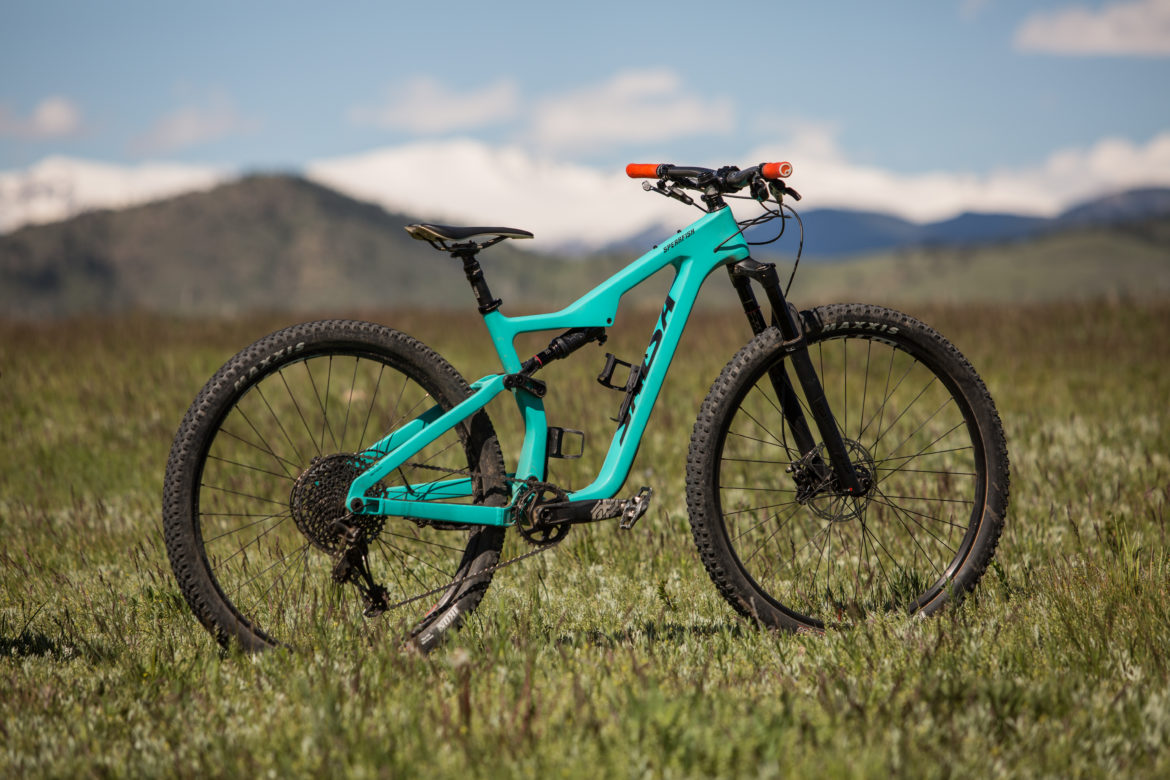
Salsa updated three of its full-suspension models in March, including the Spearfish, Horsethief, and the Rustler. I got my hands on the Spearfish in April for my first long-term review of the year, and after riding at least ten other bikes over the course of the year, it’s still the bike I think about most often.
The Spearfish gained 20mm of travel both front and rear, and got a geometry refreshment. The geo changes aren’t super progressive, with a 74.3° seat angle and a 67.8° head angle. I felt like it was perfect for the rider to remain in a comfortable climbing position while still being slack enough to go really fast downhill. With the revised Split-Pivot suspension, the Spearfish is a rocket uphill and I couldn’t help mashing on the pedals while climbing. The Split-Pivot platform also comes in handy descending and keeps the tires glued to the ground over bumps and in corners.

Overall, I thought the Spearfish was a killer XC bike for people who don’t take XC too seriously. It’s suitable for all-around trail riding, bikepacking, and all-day adventure. Sure, it’s a little heavy on the scale, but I never noticed on the trail. There’s also upgrade potential in the wheels and drivetrain to lighten it up. I’d recommend riding any of the new Salsas if their demo truck comes to town or a local bike shop has them in stock. Salsa has also taken strides to offer very affordable starting prices for the Spearfish.
-Matt
Ibis Ripley

In April I got a chance to ride the latest Ibis Ripley on the excellent mountain bike trails located in the brand’s backyard (read the full review here). To me, the new Ripley embodies the incredible improvements we’re seeing in mountain bike tech these days, from lighter weights to smarter designs, resulting in real boosts in performance that make regular riders feel like rocks stars on the trail.
This is the fourth generation of the Ripley, and with the new design, Ibis drops more than half a pound off the weight of the carbon frames and lowers the seat tube mast to accommodate longer dropper post travel ranging from 125mm to 185mm depending on the frame size. There’s also more room for a water bottle inside the frame, and the cable routing is greatly improved, which any backyard mechanic will appreciate.

On the performance side, Ibis has dialed in the geometry to keep riders feeling fast and comfortable on both the climbs and descents, which is exactly what we expect from a great trail bike. The DW-link suspension design is tried and true, and with the newest Ripley, Ibis has managed to make the suspension curve even more progressive. (Find the frame at CompetitiveCyclist.com.)
-Jeff
Jamis Portal

The Jamis Portal features a unique suspension design and build prices top out where most mountain bike brands begin. Looking back at the list of bikes I tested this year, I’m honestly surprised the Portal was one of my favorites. (Read the full review here.)
Unlike many of the long, slack bikes we tested this year, the Portal harkens back to a time when the word “playful” was en vogue. It was a time when many bikes were built less for slaying enduro race courses and more focused on having fun in the woods on the weekend. With the 3VO suspension design, riders don’t even have to fuss much with sag or fiddle with a switch for climbing and descending. This is a bike that’s just designed to be ridden, and it feels refreshing.

The performance alone makes this bike a worthy choice, but what pushes it into my top three for this year is the value this bike offers. I tested the $2,999 build and while it’s heavy and the components are pretty basic, the overall ride feel is on par with more expensive bike I’ve ridden recently.
-Jeff
Revel Rascal

Another lasting impression, from way back in March, was my ride with the Revel Rascal (read the full review). I didn’t spend a lot of time with the bike — only a 15-mile ride — but it was easy to tell that the Rascal offers something special. The Revel brand debuted in March, formed by a collection of people with a lot of experience in the bike industry. They licensed the CBF (Canfield Balance Formula) suspension design from the Canfield Brothers — who, by the way, are now Canfield Bikes.
The Revel Rascal and Rail are the first bikes to incorporate CBF on a carbon frame. During my ride in Moab, I left the suspension in ‘open’ mode the whole time, and it was one of the most advanced suspension platforms that I have ridden yet. It floats along chunky ground, maintaining its position high in the travel, while it’s still very active over bumps for a combination of efficiency and traction.

Once I pointed the bike downhill on loose and steep sections, the Rascal charged hard into the dark, looking for more mischief. As a boutique-ish brand, these bikes don’t come cheap. The Rascal starts at $5,000, but it’s such a good looking bike, with performance to match. For riders who want an all-around trail bike, a stage race monster, or something they can throw into a lighter, local enduro, the Rascal is an excellent choice. (Find the Revel Racal at evo.com.)
-Matt
Orbea Occam
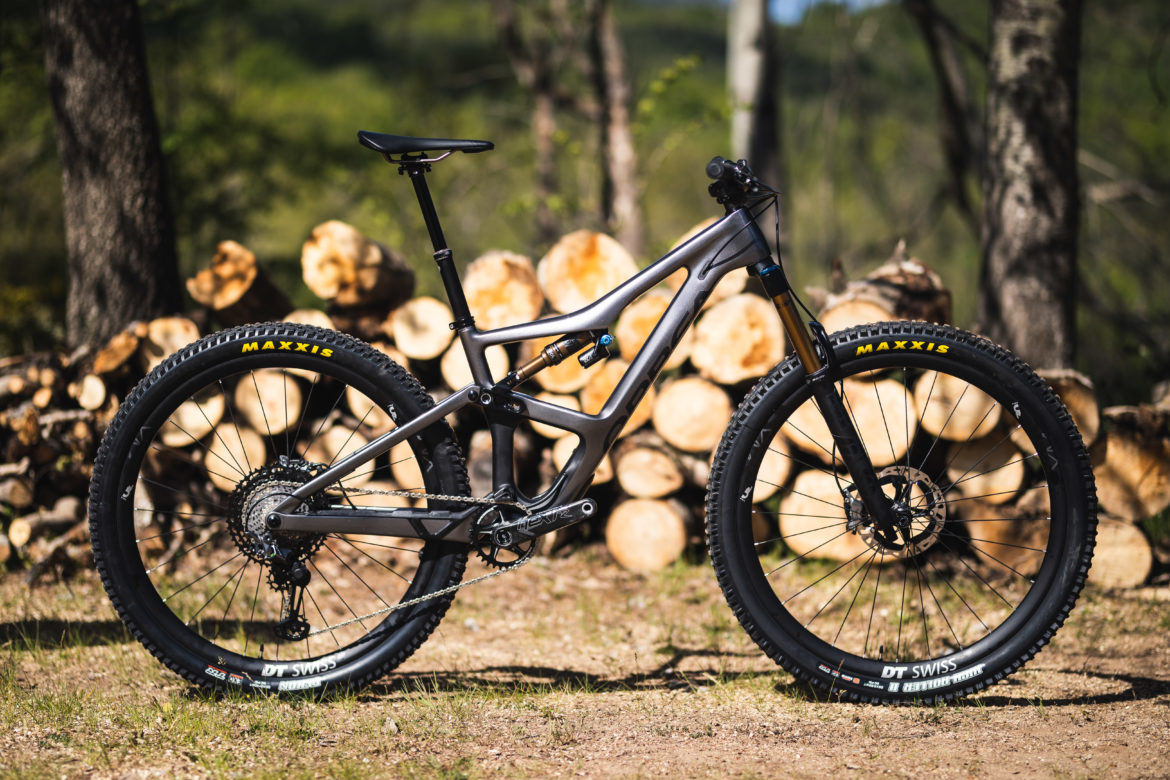
It wasn’t my intention, but I only managed to test one true “trail bike” this season. Fortunately, it was a sweet all ’rounder that would have been considered a proper enduro bike a couple of years back. I rode the Orbea Occam at the company’s press camp in Spain this past spring, and the bike proved worthy of its place in any quiver.
The medium frame I tested has a 66° head tube angle, 77° seat tube angle, 450mm reach, and 440mm chainstays. Sound like an enduro race bike? When you add in the 140mm of air sprung rear suspension, and a 140mm or 150mm fork, I wouldn’t hesitate to turn up at the start line on the Occam. The deciding element that slots it in the trail category, rather than enduro, is its weight and nimble temperament. The Occam takes the Rallon’s playfulness up a notch, acting more like a teenager with too much sugar than a partying college kid. The bike climbs as well as its longer-legged Rallon sibling and loves gravity almost as much.
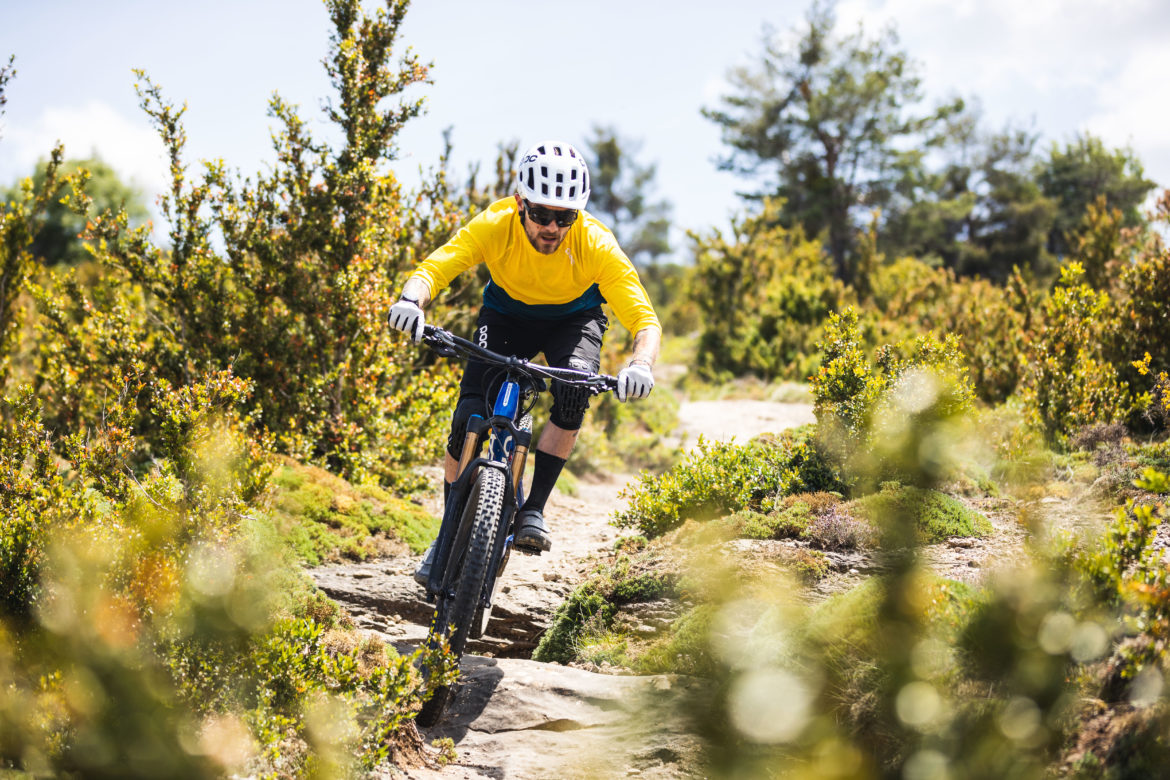
The Occam wasn’t my favorite trail bike because it’s basically an enduro bike, and it genuinely feels ready for any style of riding that you sign it up for — as a trail bike should. You could race an XC or enduro event with it simply by swapping tires; or leave a set of Minions mounted to do it all. Additionally, I like that the bike comes in a broad range of builds and price offerings, from $7,999 for the carbon LTD model to $2,599 for the base alloy bike. I currently have an Occam M10 review bike in the basement, so look for more info on this one in the spring.
-Gerow
Orbea Rallon

Next up on the list of favorite test whips this season is Orbea’s Rallon 29er. I was fortunate enough to test the Rallon during the frame’s 2019 to 2020 growth spurt, where it gained 10mm of rear travel and donned some impressively more supple linkage characteristics. The fork also grew longer, from 160 to 170mm, but I only rode it with a 160mm fork.
The standout variable for the Rallon, beyond being a handsome looker, is its inherent agility. The bike has nearly the same enduro race-ready cut as my Ancillotti Scarab Evo, but its natural disposition is more of a party-planner than a focused podium magnet. I kept the coil shock on the bike throughout the test, and I wouldn’t swap it for a lighter air-sprung damper if I owned this whip. The suspension design offers ample traction, and the bike is light enough to be a fun climber. All of these characteristics grew even better when I installed the 2020 linkage kit, which can fit any R5 Rallon model.

The high-end Rallon build I rode retails for $9,999, and at that price the bike better do everything for you, save brushing your teeth and filing your taxes. Orbea offers several more affordable builds for their longest travel bike, including a base model at $4,499 or à la carte frames priced at $3,799. Apart from the suspension, I wasn’t as impressed with the build kit on this bike for the price. If I wanted to own a Rallon I would likely build up the frame with my own carefully curated components. In the end, “favorite bikes” are really favorite frames for me, and this one is fantastic. (Find the Orbea Rallon at The Pro’s Closet.)
-Gerow
Ancillotti Scarab Evo29

My favorite test bike for 2019 also happens to be my daily driver. The Ancillotti Scarab Evo29 is a burly gravity whip, purpose-built for the rough tracks I find myself enjoying these days. I have been riding it for nearly a year now, and I’ll soon type up a long term review of the shiny frame.
Like all Ancillotti bikes, this Scarab frame was hand-built in Italy, tailored to my precise measurements and riding style. The adjustable geometry can lean between 64° and 66° headtube angles while raising and lowering the BB to achieve those slants. The ride is smoothed out by a 160mm fork, and riders can choose between 165mm or 150mm of rear suspension. For most trails, I leave the bike in the 150mm position, as it feels a little more active. The Ancillotti coil shock provides the best rear tire traction I have ever experienced, both while climbing through technical rocks or plowing over them with gravity.

The most glowing element of the Scarab is its climbing capability. I fully expected a bike with a coil shock and a decidedly DH rear end design to feel bouncy on the way up, but I was promptly proven wrong. The Scarab is genuinely fun to climb with, and I genuinely love to climb. Pointed downslope, the Scarab feels composed and race-tuned, with all the right geometry numbers to save the day when things get a little too loose. Depending on the day, my build would retail somewhere in the $6,000 – $8,000 range, and the frame and custom shock are available for €3,100.
-Gerow
Rocky Mountain Slayer

I didn’t plan on having a “favorite” bike for this article that matched the XC, trail, and enduro categories, but my third favorite bike that I spent time with this year was the heavy-handed Slayer, which debuted in August on an all new platform. (Read my test ride review here.)
The Slayer isn’t just a bike that Rocky gave more travel to, slacked out, and added bigger wheels. After closely reviewing the last generation of the Slayer that didn’t quite hit the mark for freeriders or enduro racers, the newest Slayer got a change in kinematics that makes it surprisingly easy to pedal for a bike this big. With pedaling efficiency, outstanding traction (especially with the coil shock), and the proper geo, the Slayer 29 that I have been riding is an impeccable bike to climb on, considering its downhill prowess.

It’s also just as surprising on the descents. This is a heavy mountain bike — and kudos to Rocky Mountain for speccing it with the proper components out of the warehouse door — but there is still a lot of pop and play when the Slayer is moving downhill. While there are a lot of heavy-duty 29ers out there that are bent on straight-lining descents, the Slayer wants to have fun along the way, and that’s what won me over. Stay tuned for the full review soon.
-Matt
Canyon Torque

This summer I tested the Canyon Torque at Whistler Bike Park, and while I never wrote up a test ride review, it ended up being one of my favorite bikes of the year. The Torque is Canyon’s “do-it-all gravity bike” so it’s not quite a full-on downhill bike, but more than enough for most casual park riders like me. There isn’t an extreme angle on the bike, which makes it feel comfortable while descending fast and unfamiliar tracks.
Perhaps the thing that stands out the most about the Torque is how supple the suspension feels at the top of the stroke. It’s as if the rider is on a cloud, floating over every root and brake bump while staying in complete control.

It’s clear from the design of the Torque that this mountain bike was precisely designed and engineered in Germany, with standout features like an integrated downtube cover that doubles as a rattle-free cable channel. The all-black carbon fiber model I tested may appear to be all business, but it truly is a pleasure for riding park.
-Jeff
We’re currently testing a new crop of mountain bikes and plan to share even more full reviews late this year and early next year. Stay tuned to find out which bikes are our favorites in 2020!













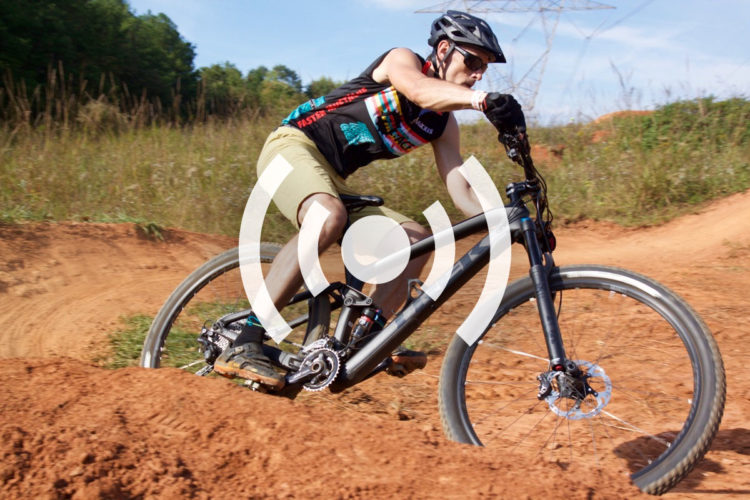
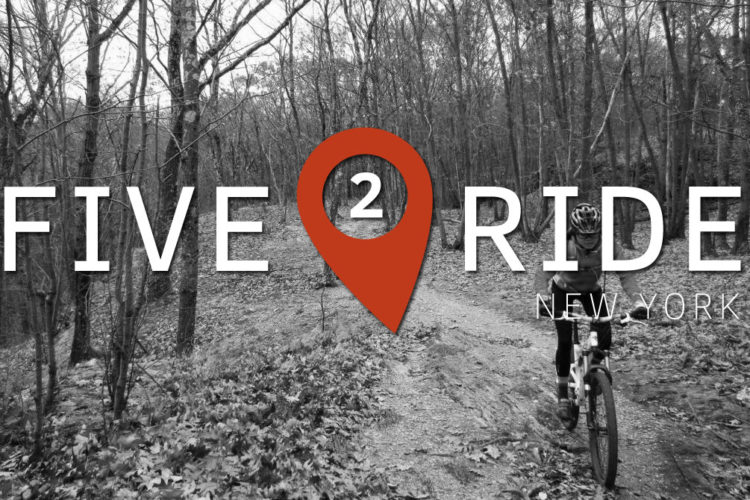






7 Comments
Dec 17, 2019
I keep trying to get more people interested in mountain biking, but when they look into it it looks too expensive. That's because they read drivel by people who are paid to review superbikes -- which they get to ride for free. Frankly I'm not impressed by a bike that is amazing to ride and costs $10,000. Give any designer at any bike company that kind of budget and of course they'll come up with a great bike. That's not exactly news. If a $5000 bike isn't amazing, it's a fiasco.
Where the ingenuity happens is between the floor where you expect a bike that won't fall apart under you (roughly $1000) and the price level where you expect a bike to be amazing as a matter of course.
Dec 16, 2019
Dec 21, 2019
You peeps are wimps 😜
Dec 19, 2019
Dec 19, 2019
For folks just getting into the sport, this is probably a better list to consider: https://www.singletracks.com/mtb-gear/10-affordable-mountain-bikes-priced-under-1000-that-are-worth-a-look/
Dec 16, 2019
Dec 19, 2019